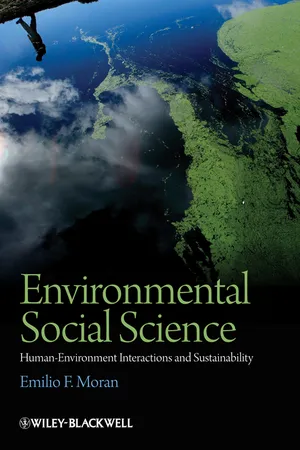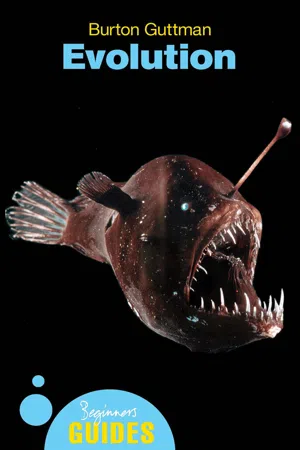Biological Sciences
What is Adaptation?
Adaptation refers to the process by which a species evolves over time to better suit its environment, increasing its chances of survival and reproduction. This can involve physical changes, behavioral adjustments, or genetic shifts. Adaptations are driven by natural selection, where individuals with advantageous traits are more likely to pass on their genes to the next generation.
Written by Perlego with AI-assistance
Related key terms
4 Key excerpts on "What is Adaptation?"
- eBook - ePub
- David Baum, Douglas Futuyma, Hopi Hoekstra, Richard Lenski, Allen Moore, Cahterine Peichel, Dolph Schluter, Michael Whitlock(Authors)
- 2013(Publication Date)
- Princeton University Press(Publisher)
Most models that incorporate physiological diversity have focused on the responses of species to global climate change. Changes in temperature, humidity, and precipitation have altered and will continue to alter the geographic distributions of species. Importantly, physiological adaptation can ameliorate or exacerbate these effects. For example, a model developed by Michael Kearney and his colleagues indicates that the Australian distribution of the dengue mosquito (Aedes aegypti) is limited by moisture in the north and temperature in the south. Their model also shows that adaptation of desiccation resistance during the next few decades could enable this species to spread throughout northern Australia. Predictions of this kind depend not only on the selective pressures created by climate change but also on the constraints that limit physiological adaptation (see section VII). Models that consider physiological adaptation should become increasingly relevant to global change biology. FURTHER READING Angilletta, M. J. 2009. Thermal Adaptation: A Theoretical and Empirical Synthesis. Oxford: Oxford University Press. Chown, S. L., and S. W. Nicolson. 2004. Insect Physiological Ecology: Mechanisms and Patterns. Oxford: Oxford University Press. Feder, M. E., A. F. Bennett, and R. B. Huey. 2000. Evolutionary physiology. Annual Review of Ecology and Systematics 31: 315–341. Garland, T. 2001. Phylogenetic comparison and artificial selection: Two approaches in evolutionary physiology. Advances in Experimental Medicine and Biology 502: 107–132. Garland, T., and P. A. Carter. 1994. Evolutionary physiology. Annual Review of Physiology 56: 579–621. Hochachka, P. W., and G. N. Somero. 2002. Biochemical Adaptation. Oxford: Oxford University Press. Karasov, W. H., and C. Martínez del Rio. 2007. Physiological Ecology: How Animals Process Energy, Nutrients, and Toxins. Princeton, NJ: Princeton University Press. McNab, B. K. 2002 - eBook - ePub
Environmental Social Science
Human - Environment interactions and Sustainability
- Emilio F. Moran(Author)
- 2011(Publication Date)
- Wiley-Blackwell(Publisher)
3Theories and Concepts from the Biological Sciences1When biologists think about individual and species responses to global environmental change they have several guiding theories that are fundamental and which underlie their views – theories social scientists need at least a basic understanding of to effectively work with biologists. That is one of the goals of this chapter. Obviously, it is impossible in a brief chapter to cover all the relevant theories from the biological sciences, and thus I trust readers from the natural sciences will be forgiving if some important theories and concepts are omitted here. The goal is to introduce social scientists to those guiding theories that seem most relevant to current issues of cross-disciplinary human–environment interaction research, particularly to work on global environmental change.Biological ecology, rather than human ecology, is very much the focus here. It is rooted at one end on population genetics and the process of natural selection, and it extends all the way at the other end to studies of the structure of whole ecosystems (Richerson 1977). A chain of theory links natural selection at the individual level to the behavior of populations, and deduces testable theories of ecosystemic and community properties from the interaction of populations (ibid.). Among these fundamental theories and concepts are: (1) evolution by natural selection; (2) that species respond individualistically, not as communities; (3) that interactions with other species help determine if a particular species will persist in a particular place; (4) whether top-down vs. bottom-up control of the community is operative in a given situation; (5) the role of succession in creating plant associations; (6) the implications of island biogeography to understand fragmentation and change; (7) the importance of biodiversity and ecosystem processes/ services; and (8) ecosystem structure and function. - eBook - ePub
Adaptation and Natural Selection
A Critique of Some Current Evolutionary Thought
- George C. Williams(Author)
- 2018(Publication Date)
- Princeton University Press(Publisher)
CHAPTER 9 The Scientific Study of AdaptationTHE PRECEDING discussions have portrayed a certain view of natural selection and advocated this view as the only acceptable theory of the genesis of adaptation. Natural selection arises from a reproductive competition among the individuals, and ultimately among the genes, in a Mendelian population. A gene is selected on one basis only, its average effectiveness in producing individuals able to maximize the gene’s representation in future generations. The actual events in this process are endlessly complex, and the resulting adaptations exceedingly diverse, but the essential features are everywhere the same.The significance of a Mendelian population is that it is a major part of the environment in which selection takes place. The population gene pool is the genetic environment of every gene. For each individual the population may be an important ecological factor in a variety of ways. It may provide some important resources, competition for other resources, and a social structure that favors the possession of specific social adaptations. The population parameters assign, to each individual, its age-related probability distributions of death, of reproduction, of specific kinds of stresses, of sex-ratios among social contacts, and of measures of spatial and ecological vagility. Such aspects of the demographic environment are factors to which organisms are precisely adapted, but this adaptation is often neglected in evolutionary discussions because of the tendency to think of a population as something adapted, rather than an environment to be adapted to.A neontological species is a group of one or more populations that have irrevocably separated from other populations as a result of the development of intrinsic barriers to genetic recombination. The species is therefore a key taxonomic and evolutionary concept but has no special significance for the study of adaptation. It is not an adapted unit and there are no mechanisms that function for the survival of the species. The only adaptations that clearly exist express themselves in genetically defined individuals and have only one ultimate goal, the maximal perpetuation of the genes responsible for the visible adaptive mechanisms, a goal equated to Hamilton’s (1964A) “inclusive fitness.” The significance of an individual is equal to the extent to which it realizes this goal. In other words, its significance lies entirely in its contribution to one aspect of the vital statistics of the population. - eBook - ePub
Evolution
A Beginner's Guide
- Burton Guttman(Author)
- 2005(Publication Date)
- Oneworld Publications(Publisher)
chapter fiveecosystems: getting along with the neighbors
The purpose of this chapter is to add the important ecological viewpoint to our growing conception of how evolution happens.adaptation and fitness
In talking about evolution, people are likely to say something such as, “Natural selection means survival of the fittest.” (The phrase “survival of the fittest” came from the writing of Darwin’s contemporary Herbert Spencer.) But “the fittest” are, by definition, those that are more likely to survive. So this sentence seems to be saying, “Selection means that those who survive are those who survive” – a tautology, rather than a brilliant insight. Perhaps we can make it more meaningful by unpacking the meaning of “the fittest.”Being “fit” might mean being healthy or it might mean fitting into an appropriate place. Certainly organisms that survive must be healthy in some sense, but this doesn’t help much; it is more helpful to consider what they must fit into, and the general answer is that they must fit into a community and an ecosystem. No organism can live by itself. It is dependent in various ways on a variety of others, and the collection of organisms that live together, with their lives intertwined and interrelated, is a biological community . The community exists in some physical environment of rock, soil, water, and air; the combination of the community with this physical environment is an ecosystem .Why can’t one species live by itself ? The fundamental reason is energy. All organisms require energy, and this energy has to come from the organism’s environment, in one of two ways. The ultimate source of energy for life on Earth is the sun. For this reason alone, we only expect to find life on planets that are close enough to a star to receive a lot of light. The energetic base of a community consists of phototrophs, the plants, algae, and some bacteria. Phototrophs use the energy of light to synthesize the organic molecules of their own structure from carbon dioxide and other simple inorganic materials. As they grow, phototrophs are storing up energy in their structures. These energy-rich materials then serve as food for organisms such as animals – chemotrophic organisms or chemotrophs
Learn about this page
Index pages curate the most relevant extracts from our library of academic textbooks. They’ve been created using an in-house natural language model (NLM), each adding context and meaning to key research topics.



